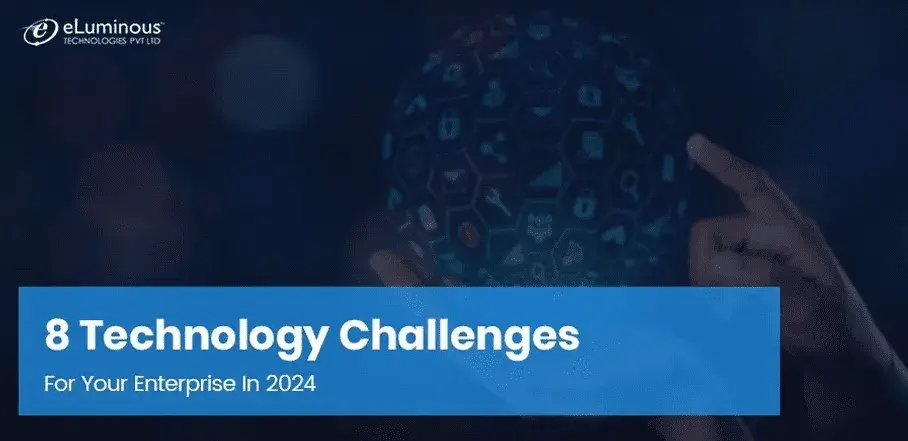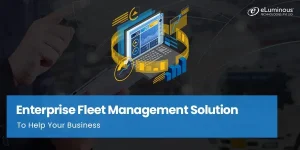Usually, enterprise technology is all about balancing traditional IT needs with strategic initiatives. 2022 is expected to be no different as enterprises around the world continue to grapple with the effects of digital disruption and rapidly-changing customer expectations. In fact, a KPMG survey of enterprise businesses found that 40% of organizations expected their fundamental business model to change by 2024.
In the face of such sweeping changes, the challenge for enterprises is to invest and adopt in the requisite technologies in order to remain competitive and agile. Here are eight such technology challenges that enterprise businesses need to prepare for in 2020 and beyond.
Enterprise Mobility
Most enterprises already have in place a mobile strategy for their businesses. But in 2022, the challenge lies in weaving enterprise mobility into the overall digital transformation strategy of your business. So, besides adopting a BYOD (Bring Your Own Device) culture, enterprises must reevaluate their mobile app, its UI/UX, feature list, etc. Enterprises could also use this opportunity to take their mobile strategy beyond just apps and into the realm of connected web design & development company to improve the overall user experience at the organizational level.
IoT (Internet of Things)
A survey by Spiceworks states that IoT will have the biggest impact on large businesses in 2020 after automation and AI (Artificial Intelligence). Much of this impact will be egged on by the greater proliferation and penetration of 5G mobile networks.
IT business solutions based on IoT help enterprises leverage a network of devices, sensors, operational technologies, vehicles, etc. along with data gathering and data analytics to improve various business processes. Enterprises that manage to surmount the IoT challenge will enjoy several businesses benefits in the immediate and long term, including better asset tracking, automating essential operations, and improving overall customer experience.
Automation & Robotics
As per the Everest Group’s annual Enterprise Key Issues Survey, large businesses expect automation to be their highest-priority investment area after analytics and cloud solutions in 2022. Investing in automation and robotics is also a sure shot way for enterprises to fast-track their digital transformation process.
RPA (Robotic Process Automation)-enabled applications will help enterprises automate mundane tasks and free up valuable human resources for tasks that require greater critical and intuitive thinking. By overcoming the automation challenge, enterprises can also create room for augmenting and upskilling their existing workforce, leading to organization-level improvement in productivity.
Blockchain
According to Gartner, the business value generated by blockchain technologies will exceed the USD 3 trillion mark by 2030. The foundations of most of this value-generating potential will be laid down in the initial years of this decade. Enterprise blockchain in 2020 and beyond will no longer be restricted to just cryptocurrency and payment solutions. Instead, blockchain will be used for diverse applications and use-cases in a variety of industries.
Salesforce lists several examples of blockchain-based IT business solutions such as credentialing and degree completion in education, claims management in insurance, tracking goods to source in retail, managing electronic patient records in healthcare, safeguarding IPR and royalties in entertainment, and customer validation in financial services, among others.
Big Data, AI, & ML
Data-driven business transformation continues to be among the top challenges for enterprises in 2020. And if one goes by this MicroStrategy survey, 94% of business professionals realize the importance of data and analytics to their business growth and overall digital transformation. This is only fitting as enterprises now have to deal with an ever-increasing volume, velocity, and variety of data on a daily basis. What compounds this challenge further is that this data comes in unstructured formats, thus making the tasks of integration and analysis that much harder.
Enterprises can overcome these challenges by investing extensively in Big Data, Analytics, and AI-enabled ML (Machine Learning). In addition to building a data-driven insight generation mechanism, enterprises will also need to secure their data collection, storage, and usage methods. This becomes even more important in the face of regulations such as GDPR (General Data Protection Regulation) that require organizations to implement safe data management systems.
Cybersecurity
A study by Kastle Systems points out that data breaches and hacks have grown multi-fold over the last decade. This presents one of the biggest technology challenges to enterprises in 2022 – safeguarding their and their customer’s data. Rapid advances in technology are a double-edged sword. On the one hand, they bring quantum improvements for businesses while on the other, they also open the door to new and more complex cybersecurity threats.
Enterprises can overcome the challenge posed by these threats by investing in the latest data protection and cybersecurity web design & development company. And as with other areas of enterprise technology, AI will take a lead here too. By adopting and integrating AI technologies in your security infrastructure, you can resist the next wave of cyberattacks that is largely expected to be AI-driven.
Skills Shortage
In 2022, a major impediment to the growth aspirations of enterprises will come in the form of skills shortage. A Barclaycard research shows that 80% of CIOs are worried about the tech skill shortage they are likely to face within their organization. This will be a major setback to enterprises as they adopt new technologies and invest in emerging ones.
To tackle this growing challenge, enterprises will need a multi-pronged approach. For starters, they need to invest in upskilling their existing employees and provide newer growth opportunities for employees with advanced tech skills. Other measures enterprises could use to bridge the skills gap include contract hiring, outsourcing to web design & development company, resource augmentation to hire dedicated developer, and looking beyond traditional sources of tech talent.
Customer Expectations
Accenture, in its Technology Vision 2022 survey, noted that 85% of business and IT professionals believe good customer relationships are central to their business growth this decade.
The key to achieving this lies in delivering a connected and personalized experience to your customers and stakeholders such as employees, partners, developers, web design & development company vendors, etc. Unfortunately, a majority of enterprise applications used today fall short in this regard. They don’t offer the kind of connected experience that is essential to create a consistent customer experience across different channels.
The remedy for this is simple – invest in connected technologies and methodologies that make the customer experience consistent, smooth, and independent of time, location, and device constraints.
Over to You
There was a time when enterprise technology moved at a slower pace compared to consumer technology, allowing enterprises enough leeway to upgrade their technology in a self-paced manner. But this convention has been upended by modern and emerging enterprise technologies that evolve just as fast as consumer technology.
As an enterprise, you can stay ahead of the curve by investing in the aforementioned technologies and becoming more agile and secure in the process. And regardless of which industry you function in, you will eventually have to deal with the questions posed by these technology challenges.
As an web design & development company, we’ve helped enterprises across Europe, Asia-Pacific, Africa, and North America deal with significant technology challenges over the last 18 years. Our offerings in this space include enterprise web and mobile development, business intelligence, AI and ML services, and digital marketing. Contact us today to know how we can help your business insure itself against the technological challenges highlighted in this post.
Speaking of which, if you liked this post, do subscribe to get crisp and highly informative blog posts delivered straight to your inbox every week. We cover a variety of topics on our blog including web and mobile development, data analytics, business intelligence, and eCommerce development, among others.
Thank you for reading. What did you make of these enterprise technology challenges? Did we miss out on any? How do you plan to deal with them? We’d love to hear your thoughts in the comments below.

Digital Marketing Manager
Responsible for developing and managing web presence, Sarah has been associated with eLuminous Technologies for 7+ years. Strategic and innovative with a passion for Content Marketing and enhancing brand awareness. Administered all business marketing operations and advertisement campaigns that eventually increased web traffic. She works under the motto “Think like a Publisher, not a Marketer.”



